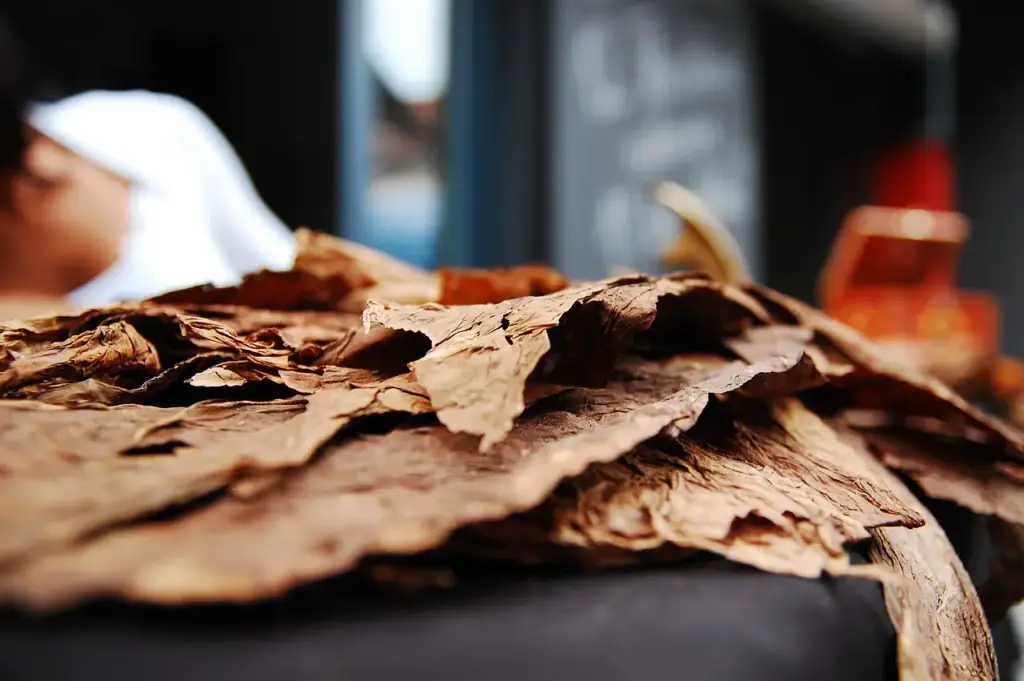
Cigars have long been a symbol of sophistication, relaxation, and tradition. At the heart of every cigar lies its defining component: the tobacco leaf. From the seed to the final rolled masterpiece, the journey of a cigar involves an intricate interplay of art and science. Understanding the tobacco and leaves that define cigars, including the wrapper, binder, and filler, not only deepens our appreciation for this craft but also helps smokers identify their personal preferences. This blog explores the tobacco and leaves that define cigars, the anatomy of a cigar, and the regions that contribute to the world’s finest blends.
The History of Cigars
The history of cigars spans centuries and continents, beginning with the indigenous peoples of the Americas. The ancient Mayans were among the first to cultivate and smoke tobacco. Archaeological evidence shows that they wrapped tobacco in plantain or palm leaves to create primitive cigars, which were used in both ceremonial and recreational settings. This practice spread to other indigenous cultures in the Caribbean and Central America.
When Christopher Columbus arrived in the New World in 1492, his crew observed the Taino people smoking tobacco. Fascinated, they brought tobacco back to Europe, where it quickly gained popularity. By the 16th century, cigar production had taken root in Spain, particularly in Seville, where factories began rolling cigars using Cuban tobacco. Smoking cigars became a symbol of wealth and status among European elites.
Cuba emerged as a global leader in cigar production during the 18th and 19th centuries. The island’s unique soil and climate produced unparalleled tobacco quality. Figures like Winston Churchill, an avid cigar enthusiast, popularised Cuban cigars worldwide. As colonial trade expanded, tobacco plantations were established in the Dominican Republic, Honduras, and Nicaragua, spreading the art of cigar making.
The Industrial Revolution brought technological advances that made cigars more accessible to the middle class. Despite mechanisation, hand-rolled cigars remained synonymous with quality and luxury. In the early 20th century, cigars became a cultural phenomenon, often associated with Hollywood glamour, success, and refinement.
Today, the cigar industry blends traditional craftsmanship with modern innovations. While Cuba remains iconic, countries like the Dominican Republic and Nicaragua produce some of the finest cigars globally. The history of cigars reflects a rich tapestry of cultural exchange, tradition, and craftsmanship.
The Anatomy of a Cigar: Wrapper, Binder, and Filler

A cigar comprises three primary components:
1. Wrapper
The wrapper is the outermost leaf and defines the cigar’s appearance and initial flavour. Wrappers come in various shades, from light tan (Claro) to dark brown (Oscuro). Common wrapper types include:
- Connecticut Shade: Known for its smooth, mild flavour and golden colour.
- Habano: Offers a darker, spicier profile with bold flavours.
- Maduro: Fermented longer to achieve rich, sweet, and robust notes.
- Candela: Bright green with a fresh, grassy taste.
- Sumatra: Spicy and earthy, often used for unique blends.
2. Binder
The binder holds the filler together and maintains the cigar’s structure. While less visible than the wrapper, it plays a critical role in ensuring a consistent burn. Some binders add subtle flavour, especially when sourced from premium regions like Nicaragua or the Dominican Republic.
- Durability: Thicker binders enhance structural integrity.
- Flavour Influence: High-quality binders can complement the filler’s profile.
- Double Binders: Some cigars feature double binders for added strength and complexity.
Binders are often chosen for their ability to hold the cigar together without overpowering the flavour. In some cases, binders from Cameroon or Honduras are used to introduce mild, nutty undertones to the overall profile.
3. Filler
The filler forms the cigar’s core and contributes the most to its flavour. Fillers are typically a blend of tobacco types, carefully arranged to balance strength, aroma, and burn quality.
- Types of Filler:
- Ligero: Strong and bold, harvested from the upper part of the plant.
- Seco: Milder, adding balance to blends.
- Viso: Medium strength, often used for flavour complexity.
- Aging Process: Filler tobaccos are aged to enhance their smoothness and depth.
- Regional Blends: Combining tobaccos from different regions—such as Nicaraguan ligero with Dominican seco—creates unique profiles.
Fillers often dictate the complexity of the cigar. A blend featuring aged ligero tobacco provides a bold, spicy character, while seco tobacco softens the experience with its milder notes. Blending tobaccos from regions like Brazil and Mexico further adds layers of richness, contributing to a diverse range of flavour profiles.
Types of Tobacco Used in Cigars
The type of tobacco defines a cigar’s flavour and quality. Common varieties include:
- Corojo: Spicy and peppery, often used for bold blends.
- Criollo: Earthy with hints of leather and sweetness.
- Connecticut: Mild and creamy, ideal for beginners.
- San Andrés: Dark and oily, delivering earthy and slightly sweet notes.
- Piloto Cubano: Rich and full-bodied, a staple in many blends.
- Olor Dominicano: Mild, balancing blends with smoothness.
Regions That Shape Tobacco
Tobacco inherits distinct characteristics from its growing region. Notable areas include:
- Cuba: Renowned for full-bodied, complex flavours.
- Dominican Republic: Smooth and aromatic, with diverse profiles.
- Nicaragua: Bold and spicy, often featuring earthy undertones.
- Honduras: Robust and earthy, ideal for full-bodied cigars.
- Ecuador: Silky wrappers with a refined flavour.
- Brazil: Sweet and rich, adding depth to blends.
The regions where tobacco is grown not only determine the flavour but also influence the burn quality and strength. For example, Estelí in Nicaragua produces strong, full-bodied tobacco, while Jalapa’s offerings are smoother and sweeter. The climate and soil composition in these areas provide unique characteristics that master blenders leverage to craft distinctive cigars.
Crafting the Perfect Blend
Master blenders are artisans who combine tobaccos from different regions to create distinctive cigars. The interplay of filler, binder, and wrapper, coupled with aging and fermentation, determines a cigar’s complexity. Premium cigars often undergo double or triple fermentation for enhanced flavour.
The fermentation process is a critical step in removing impurities and bringing out the natural sweetness of the tobacco. Some blends are aged for decades, allowing the flavours to mature and harmonise. This meticulous attention to detail ensures that every cigar offers a balanced and enjoyable experience.
Final Thoughts
Cigars represent a tradition of artistry and dedication. Understanding their components, history, and craftsmanship enhances the smoking experience. Next time you light up, savour not just the flavours but also the story behind the cigar. Each puff is a tribute to centuries of tradition and the skilled hands that brought it to life and the tobacco and leaves that define the cigar.
